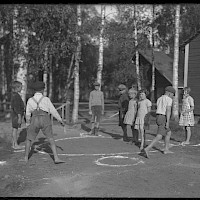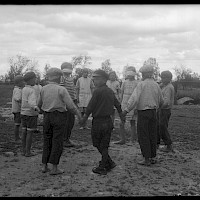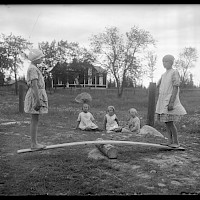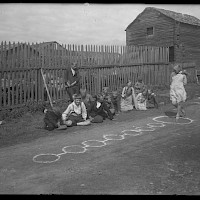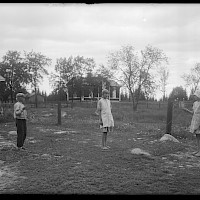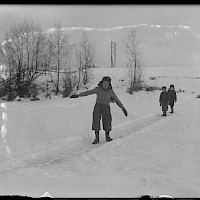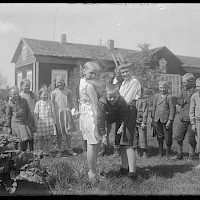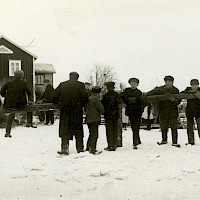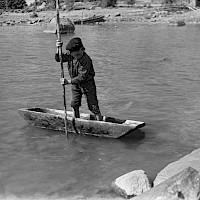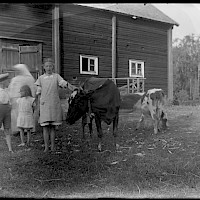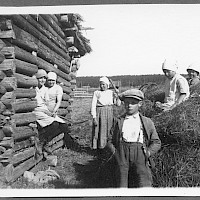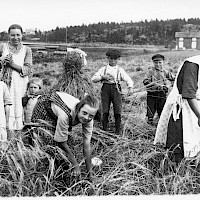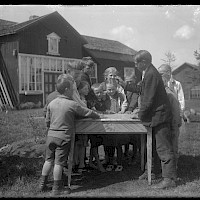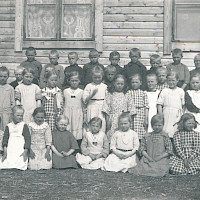
The school
Children were expected to do chores around the house from a very early age. A small child might help by feeding the chickens or the pig, while the older girls and boys were given more demanding tasks such as spinning wool or binding fishing nets. Older children, especially girls, were expected to look after their younger siblings when the parents were busy working out in the fields or in the cow-shed.
School at homeCompulsory learning was introduced in Finland in 1921. Before that, children were not required to attend school, but everyone still had to learn how to read. Those who did not go to school were perhaps taught by their parents or grandparents. Once a year, the church held a reading examination, and everyone had to take part – and pass. Questions were also asked about the Christian faith. – Writing was not considered to be quite as important as reading.
Prior to 1921, a large number of schools were kept by the municipality, the church and sometimes even private owners. More remote communities had travelling schools, which operated in the village for a few weeks every autumn and spring. Any farm house might serve as a school building, where small children and teenagers would gather around a teacher for some basic tuition. The teacher of a travelling school moved from village to village, teaching classes for a few weeks in each place. School terms were much shorter than today, not only in travelling schools but in “proper” schools as well. The children could attend school only when the work situation at home allowed it. As there was a lot of work on the farms, especially in the spring and in the autumn, the children could simply not be spared.
But children are children – and children play games! Outdoor games were especially popular, and many of the old games are played to this day, for instance Tar Pot and Ten Sticks on a Board. Toys were often home-made, either by the parents or by the children themselves.


